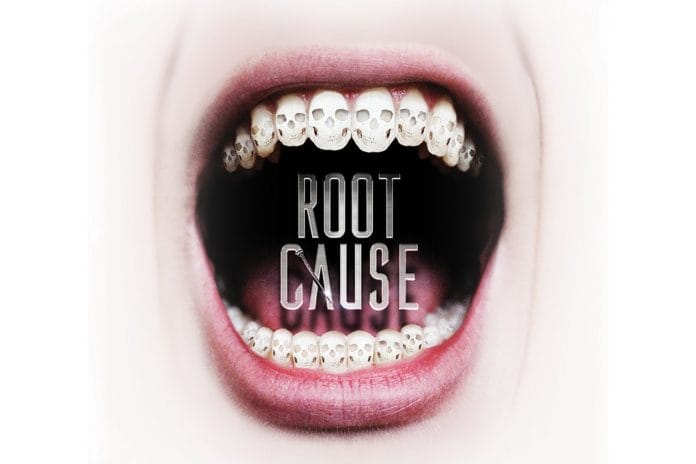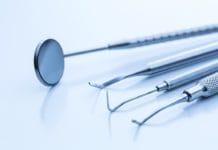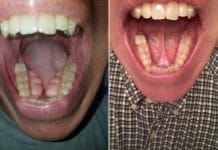If you haven’t heard, let me be the first to introduce you to a documentary on Netflix called “Root Cause.” The documentary follows an individual’s experience with root canal treatment, and the alleged systemic issues he claims is directly associated with root canal treatment. I decided to watch the documentary for the sole purpose of preparing myself for the many questions I anticipate from my patients. I wrote down a few of the statements made in the movie that I researched and would like to share what I have found. But first, I would like to introduce you to the three doctors cited in this documentary, Dr. Weston Price, Dr. Hal Huggins, and Dr. Boyd Haley. I wanted to learn more about these individuals, so I did a little research, and this is what I found:
Dr. Weston Price: Dr. Price was a Canadian dentist known primarily for his theories on the relationship between nutrition, dental health, and physical health. Dr. Price spent 25 years of his career researching the relationship between root canal therapy and systemic disease. He formed a theory called “focal infection theory.” Focal infection theory is a concept that claims many chronic diseases are caused by focal infection or localized infection. The theory resulted in many extracted teeth and removal of tonsils.
In the 1930s the focal infection theory began to be reexamined when new research shed doubt on the results of previous studies. Dr. Price passed away on January 23, 1948. Three years after Dr. Price’s death the Journal of the American Dental Association released a special review issue confirming the shift of standard of care from extraction back to endodontic treatment. Price’s studies were found to be flawed in the sense that they lacked proper control groups, used excessive doses of bacteria, and had bacterial contamination during teeth extraction, leading to experimental biases.
Dr. Hal Huggins: Dr. Huggins played a major role in generating controversy over the use of amalgam fillings. In 1973, he began studying mercury toxicity and its impact on human health. He created the Huggins Diagnostic Center in Colorado Springs, Colorado. At this center, which Dr. Huggins claimed the profits funded research and free care, patients would spend two weeks having extensive treatment including the removal of amalgam fillings.
In 1995, the center was closed amidst a series of lawsuits claiming negligence and fraud. In the mid-’80s, Dr. Huggins was investigated for marketing a device without FDA approval. Dr. Huggins claimed the device could detect “positive or negative charged dental fillings.” The FDA determined the device was being promoted with scientifically unsubstantiated claims. In 1996, Dr. Huggins’ dental license was revoked for gross negligence and the use of unnecessary and unproven procedures.
Dr. Boyd Haley: Dr. Haley is a retired professor of chemistry at the University of Kentucky. Dr. Haley states the mercury exposure from amalgam fillings and vaccinations may cause autism and Alzheimer’s disease. Dr. Haley has appeared in court to testify against vaccine manufacturers, with the argument that thimerosal causes autism. However, his testimony was not accepted on the basis that his “lack of expertise in genetics, epidemiology, and child neurology make it impossible for him to supply the necessary factual basis to support his testimony.”
Dr. Haley founded the company CTI Science, a biotechnology firm. This company marketed a product called OSR#1, a supplement described as an “antioxidant” dietary supplement. The supplement is a powerful chelator originally developed to remove heavy metals from soil and acid mine drainage. The FDA questioned the safety of the product. Dr. Haley did not respond to the FDA’s concern, and OSR#1 was withdrawn from the market. Prior to the supplement being removed from the market, it was being used for children with autism, claiming it would remove heavy metals and improve autism symptoms.
To sum up we have one dentist whose research was severely flawed by today’s standards, another dentist who had his dental license revoked and was promoting unsubstantiated science, and lastly, we have a professor of chemistry marketing supplements to children without FDA approval or any research to support his claims that the supplement helps autism symptoms. I’ll let you digest that information and decide for yourself if these individuals can be trusted by your standards.
The following are some quotes I took from the movie to research and what I discovered.
“97% of patients with breast cancer had a root canal on the same side as the cancer.” I researched this for several hours, and I found NOTHING! Not one iota of scientific evidence to support this claim. This is the equivalent of saying “100% of patients with cancer drink water.” Correlation does not equal causation. If anyone cares to research this and finds scientific evidence to support this claim, please email me the link.
“The #1 cause of heart attack is root canal treated teeth.” I found a study conducted over 44 years, called the Baltimore Longitudinal Study of Aging. This study evaluated whether apical periodontitis, root canal treatment, and endodontic burden were associated with long term risk of cardiovascular disease. The study was published in the International Endodontic Journal in 2016. The results suggest the number of teeth with apical periodontitis and/or root canal treatment (the total sum of which equals endodontic burden) in mid-life was an independent predictor of cardiovascular events among community-dwelling participants in the Baltimore Longitudinal Study of Aging. Prospective studies are required to evaluate cardiovascular disease risk reduction with the treatment of apical periodontitis.1 The study suggests a possible risk reduction with root canal treatment versus non-treated teeth with apical lesions and recommends more specific studies be conducted to determine this possibility. So, yes there are studies that indicate untreated abscessed teeth do contribute to increased risk of cardiovascular disease. However, there is not strong enough evidence to suggest root canal treated teeth are a contributing factor; at this time, more studies are needed.
After trying to discredit endodontic treatment, the movie starts tap dancing dangerously close to a very controversial dental diagnosis. In the documentary, the doctors interviewed start referring to the apex of the root canaled tooth as well as areas in the jaw where a tooth has been extracted as “cavitations.” They elude to the idea that bacteria reside in these cavitations in the jaw and causes inflammation leading to systemic disease. I personally believe inflammation is a huge contributing factor in most, if not all systemic diseases. Though the doctors never call it by name, I believe the cavitations at the apex of root canaled teeth and areas in the jaw where teeth were previously extracted which they are referring is neuralgia-induced cavitational osteonecrosis (NICO) and/or fatty degenerative osteonecrosis of the jawbone (FDOJ).
If you are a dental professional and you have never heard these terms, don’t worry, I’m confident you are not alone. NICO/FDOJ is described as hollow, dead spaces in jawbones where the bone marrow is dying or dead.2 I plan to explain this further, but first I want to explain why I said this is a controversial diagnosis by sharing the American Association of Endodontists position statement on NICO lesions.
The AAE states, “When a NICO lesion is suspected to be associated with an endodontically treated tooth, no surgical procedures should be performed until an orofacial pain specialist confirms the diagnosis. It is also recommended the treatment be performed and followed up by the orofacial pain specialist. In addition, the practice of recommending the extraction of endodontically treated teeth for the prevention of NICO, or any other disease, is unethical and should be reported immediately to the appropriate state board of dentistry.”3 I would also like to add that many dental professionals consider a NICO/FDOJ diagnosis “quack dentistry.” This may be true, however, I plan to rely on the science-based evidence, and that is what I plan to share with you.
A little history on NICO/FDOJ, as described in a publication in the National Journal of Maxillofacial Surgery, states, “Dr. GV Black, the father of modern dentistry, described this cavitation process as early as 1915 when he described a progressive disease process in the jawbone, which killed bone cells and produced a large cavitation area or areas within the jawbones. He was intrigued by the unique ability of this disease to produce extensive jawbone destruction without causing redness in the gingiva, jaw swelling, or an elevation in the patient’s body temperature.”4 The cause of NICO/FDOJ is allegedly avascular osteonecrosis.4
It is believed that NICO/FDOJ is largely neglected today in mainstream dentistry. One study claims the reason for this is that conventional X-ray techniques are limited, due to the 2- dimensional image. The study goes on to recommend the use of CBCT or a computer-assisted through-transmission alveolar ultrasound (TAU) to properly diagnose NICO/FDOJ lesions.2
So, how does NICO/FDOJ come in to play when we are looking at systemic disease? Thirty-one patients with NICO/FDOJ participated in a study, jawbone samples of each patient were analyzed to assess the expression of immune modulators that can play a role in inflammatory disease. Of these patients, their symptoms included nonspecific facial pain/trigeminal neuralgia, joint aches or rheumatoid arthritis, chronic fatigue syndrome, breast cancer, an autoimmune disease of the thyroid gland, multiple sclerosis, Parkinson’s disease, asthma, leukemia (in remission), allergy/intolerance, and amyotrophic lateral sclerosis (ALS). In addition, tissue samples from normal jawbones were analyzed for comparison.
In this study, they measured the levels of RANTES and fibroblast growth factor-2.2 RANTES is a chemokine that plays an important role during acute infections. Chemokines are small proteins that help coordinate immune response. Defects in RANTES or RANTES receptors can compromise immunity to acute infections and has been shown to lead to more severe disease in humans with West Nile Virus.5 Fibroblast growth factor-2 stimulate the growth and development of new blood vessels that contribute to several diseases, such as cancer and atherosclerosis. On the flip side, it contributes to normal healing and tissue development as well.6 At the end of the study, it was hypothesized, “a permanent increase in RANTES/FGF-2 expression in NICO/FDOJ sites could exert negative impact in terms of joint inflammation or inflammatory signaling in the central nervous system and breast tissue. A comprehensive understanding of the complex networks outlined in this paper will require further research into the fundamental properties of cytokines and interleukins.”2
Though the research is interesting, there are a few problems with this study, including a limited control group. I was not completely satisfied with this somewhat flawed study; therefore, I decided to do more research, and see if I could find any more studies with a better control, as well as something more recent. I did find another, once again it is a small group of participants, yet a larger control group than the previous study.
In this study, the researchers were looking to answer the question of whether common and widespread dental procedures, like root canals and the removal of wisdom teeth, contribute to chronic inflammation in the jawbone. Samples of jawbone from 16 patients were analyzed from the following areas: former surgical site in the retromolar wisdom tooth area and apical of teeth with root canals. As a control, specimens from 19 patients with healthy jawbone was also analyzed. The samples were examined for seven different cytokines, in contrast to the previous study which only examined for two.
The study found overexpression of RANTES in samples from NICO/FDOJ lesions retrieved from the apex of root canaled teeth, as well as areas of previous surgical sites of wisdom tooth extraction. The study concluded, “this is one of the first investigations to show a potential correlation between RA (of any type) and ischemic or inflammatory jawbone lesions—an association that has been speculated on for decades. Additionally, chemokine overexpression in the jawbone connected to root canaled teeth seems to be a possible danger for immune preservation, which is needed to maintain a balanced system and to prevent different types of systemic diseases. Improper wound healing in old extraction sites and underneath root canaled teeth might also provoke immune modulation, which hinders the restoration of an already disease-modified immune system.”7
The flaw in this study, besides the small study group, is that the published article was written by the same authors as the previous study, which leaves the question of bias. Obviously, more studies by different researchers need to be done for a more conclusive result.
To say the least, this science did not lead me where I thought it would. This is a perfect example of the need to always be open to new or different possibilities. I thought when I began writing this I would easily conclude that the documentary was completely ridiculous, however, science seems to be possibly supporting some of the information. I use the word “supporting” loosely here, considering the many flaws in the studies I have cited. I would like to see more studies on this subject before I can come to a solid conclusion. These studies certainly open a door to connect medicine and dentistry, something I personally believe is long overdue. I encourage you to read the studies I have cited, maybe NICO/FDOJ is “quack dentistry,” but what if it’s not?
Originally published on Dental Masterminds.
References
- M S Gomes, F N Hugo, JB Hilgert, M Sant’Ana Filho, DMP Padilha, EM Simonsick, L Ferrucci, and MA Reynolds. Apical Periodontitis and Incidents of Cardiovascular Events in the Baltimore Longitudinal Study of Aging. Int. Endod J. 2016 Apr; 49(4): 334-342. Retrieved from https://www.ncbi.nlm.nih.gov/pmc/articles/PMC5134837/
- Johann Lechner and Volker von Baehr. RANTES and Fibroblast Growth Factor 2 in Jawbone Cavitations: Triggers for Systemic Disease? Int J Gen Med. 2013 Apr; 6: 277-290. Retrieved from https://www.ncbi.nlm.nih.gov/pmc/articles/PMC3636973/
- American Association of Endodontists. NICO Lesions Neuralgia-Inducing Cavitational Osteonecrosis: AAE Position Statement. Retrieved from https://www.aae.org/specialty/wp-content/uploads/sites/2/2017/06/nicolesionsnew.pdf
- Yazad R Gandhi, U. S. Pal, and Nimisha Singh. Neuralgia-Inducing Cavitational Osteonecrosis in a Patient Seeking Dental Implants. Natl J Maxillofac Surg. 2012 Jan-Jun; 3(1): 84-86. Retrieved from https://www.ncbi.nlm.nih.gov/pmc/articles/PMC3513818/
- Alison Crawford, Jill Marie Angelosanto, Kim Lynn Nadwodney, Shawn D Blackburn, E. John Wherry. A Role for the Chemokine RANTES in Regulating CD8 T Cell Response during Chronic Viral Infection. Retrieved from https://journals.plos.org/plospathogens/article?id=10.1371/journal.ppat.1002098
- Matthew A Nugent, Renato V Iozzo. Fibroblast Growth Factor-2. Int J Biochem Cell Bio 2000 Feb; 32(2): 115-120. Retrieved from https://www.sciencedirect.com/science/article/pii/S1357272599001235?via%3Dihub
- Johann Lechner and Volker von Baehr. Chemokine RANTES/CCL5 as an unknown link between wound healing in the jawbone and systemic disease: is prediction and tailored treatments in the horizon? EPMA J. 2015; 6(1): 10. Retrieved from https://www.ncbi.nlm.nih.gov/pmc/articles/PMC4435812/












